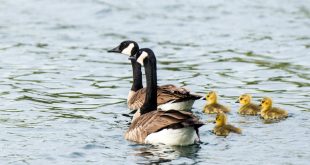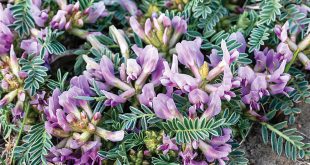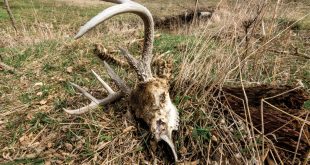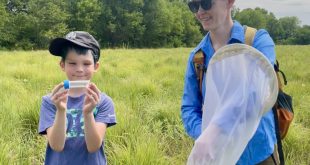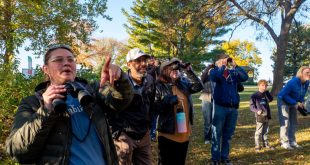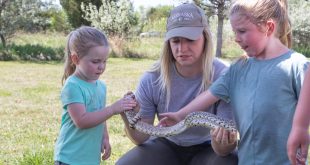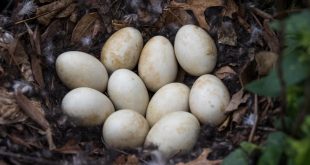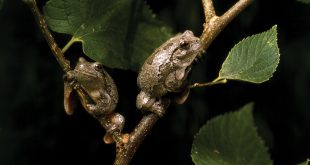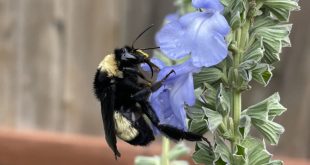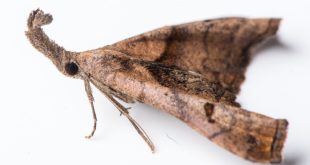In the animal kingdom, maternal behaviors vary widely across different species. By Monica Macoubrie, Wildlife Education Specialist Mother’s Day is a celebration of the nurturing, unconditional love and sacrifices mothers make for their children. In the animal kingdom, maternal behaviors vary widely across different species, highlighting the diverse strategies animals use to care for their offspring and ensure their survival. These different approaches to motherhood provide a broader perspective that is worth celebrating on Mother’s Day. Killdeer (Charadrius vociferus) Killdeer …
Read More »Nebraska’s Obscure Prairie Milkvetches
Milkvetches are small, less eye-catching wildflower species that sadly go unnoticed. Story and photos by Gerry Steinauer, Botanist Wildflowers are like wildlife in that the big, showy species, such as sandhill cranes, mountain lions, roses and gayfeathers, get all the notice and attention, while small, less eye-catching species sadly go unnoticed. A prime example of this are Nebraska’s 24 native milkvetch (Astragalus) species. Most are rosette-forming plants with colorful, clustered flowers that inhabit dry rock outcrops and clay badlands in …
Read More »Tick Tactics
Just because ticks aren’t your favorite creatures doesn’t mean you can’t admire their life strategies. Story and photos by Chris Helzer I found a deer carcass one April day while walking around my family prairie. I’m not a trophy hunter, but I’m pretty sure my friends who are would have been happy to see it beneath their tree stand the previous fall. I don’t know how long the dead deer had been lying there. By the time I found the …
Read More »Nebraska Nature in Color – Blue Hair and Bumble Bees
Community science specialist Alie Mayes talks about the challenges in sharing her love of nature with her nephew. By Alie Mayes, Community Science Specialist As I was scrolling through the photos on my phone the other day, I realized that the majority of my pictures consist of three things: nature, nature for iNaturalist and the people/pets I love. There were a few pictures that made me stop and smile. Last summer, my nephew, Aiden (then 8 years old), came to …
Read More »Breaking Down Birding Barriers
Meet a Nebraska woman working for more inclusive and accessible birding in the state. By Renae Blum In conversation, Cassandra Dean smiles easily and laughs often. But her eyes well up with tears remembering a birding event she led last fall at Indian Cave State Park. Hosted on a newly-built trail designed to be accessible, Dean’s outing was described as “birding for everybody and every body” – inclusive to people with disabilities and other health concerns. At the event, Dean …
Read More »A Guide to Herping
Try a new outdoor activity this spring. Herping is the practice of searching for reptiles and amphibians. By Monica Macoubrie, Wildlife Education Specialist Looking for ways to get kids outside and away from their screens and tablets? Taking a nature walk or going on a scavenger hunt in the backyard are classic examples. Families with children also love the idea of “firsts”: The first time their children sleep under the stars, the first time they reel in a fish or …
Read More »The Diversity of Eggs
Egg shape, color and size are remarkable adaptations for successful reproduction. By Monica Macoubrie, Wildlife Education Specialist Eggs are fascinating biological structures that serve as the cornerstone of reproduction for numerous species across the animal kingdom. From the familiar chicken egg to the exotic eggs of reptiles and insects, the world of animal eggs is as diverse as the species that lay them. In this article, we explore the various types of eggs laid by different species and uncover the …
Read More »Cope’s Gray Treefrog
The Cope’s gray treefrog plays a vital role in forest and wetland ecosystems of Nebraska. By Monica Macoubrie, Wildlife Education Specialist Meet the Cope’s gray treefrog (Hyla chrysoscelis), a captivating amphibian found across eastern North America. Sporting subtle grays and greens adorned with intricate patterns on its skin, this arboreal frog is celebrated for its adaptability and enchanting calls. Despite its small size, this treefrog plays a vital role in the forest and wetland ecosystems where it lives. Appearance When …
Read More »Nebraska Nature in Color – The Greening of Spring
Ways to celebrate new growth in spring. By Alie Mayes, Community Science Specialist This article is part of the Nebraska Nature in Color series. This limited series will run monthly from December 2023- June 2024. Spring has officially sprung! Well in truth, spring has been springing for a while now. The U.S.A. National Phenology Network has volunteers across the nation who help track spring’s progression. According to their Spring First Leaf Index, spring arrived in Nebraska 20 days early this …
Read More »The Night Shift – Nebraska’s Nocturnal Wildlife
When night falls, nocturnal creatures play essential roles in shaping Nebraska’s ecosystems. By Monica Macoubrie, Wildlife Education Specialist As the sun dips below the horizon, a hidden world awakens under the cloak of darkness. In the shadows of woodlands, across the sprawling plains and along the meandering waterways, nocturnal creatures emerge to navigate the night. From the silent wings of owls to the cryptic movements of mammals, Nebraska’s nocturnal creatures have evolved to thrive in the darkness. In this realm …
Read More » Nebraskaland Magazine
Nebraskaland Magazine
